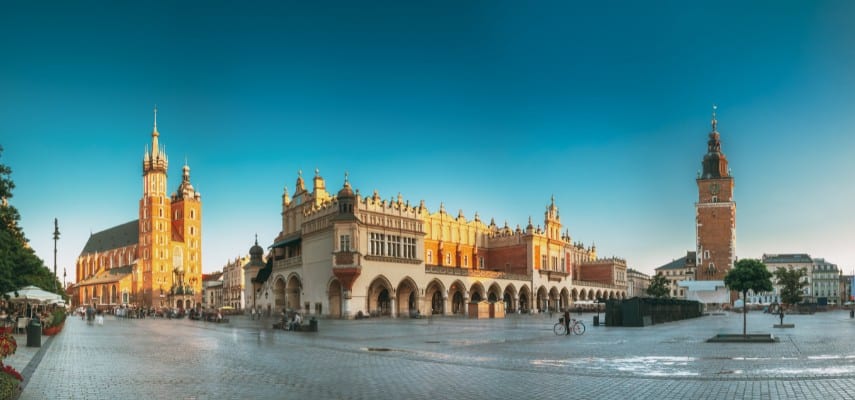
Yogyakarta, often simply called "Jogja," is the beating heart of Javanese culture, a city where ancient traditions beautifully intertwine with modern life. It’s the only province in Indonesia still governed by a sultanate, lending it a unique historical and spiritual gravitas. From the majestic wonders of Borobudur and Prambanan to the vibrant street art and bustling markets, Yogyakarta offers a sensory feast for every traveler. And the best part? Experiencing this cultural gem doesn’t have to break the bank, especially when you master the art of finding cheap flights.
This comprehensive guide will walk you through securing affordable airfare to Yogyakarta, delve into its must-see attractions, rich history, practical travel tips, accommodation options, transportation, and the best time to visit, ensuring your Indonesian adventure is both profound and budget-friendly.
The Quest for Cheap Flights to Yogyakarta

Related Articles about Yogyakarta on a Budget: Your Guide to Cheap Flights and an Unforgettable Indonesian Adventure:
- Unveiling the Jewel of Africa: A Guide to South Africa’s Finest Hotels and Unforgettable Experiences
- Malaysia’s Crown Jewels: A Guide to the Nation’s Finest Hotels and Unforgettable Experiences
- Chile: A Tapestry of Wonders – Unveiling the Top Attractions and Essential Travel Guide
- Cusco: Gateway to the Sacred Valley and the Lost City of the Incas
- Chiang Mai: A Journey to the Rose of the North
Finding cheap flights to Yogyakarta (code YIA for the new international airport, or JOG for the older, smaller Adisucipto) requires a blend of strategy, flexibility, and a little bit of patience. While direct long-haul flights from outside Southeast Asia are rare, connecting flights offer excellent value.
1. Be Flexible with Your Dates:
This is perhaps the golden rule of cheap airfare. Airlines often have significant price differences even on consecutive days. Use "flexible date" search options on comparison websites to see prices across an entire month or year. Avoiding peak seasons (public holidays, school breaks, and the dry season months of June-August) can lead to substantial savings.
2. Fly Mid-Week and Off-Hours:
Tuesdays, Wednesdays, and Saturdays are typically the cheapest days to fly. Early morning or late-night flights, while less convenient, often come with lower price tags than those departing during prime hours.
3. Book in Advance (But Not Too Far):
For international flights, booking 2-3 months in advance is often ideal. For domestic flights within Indonesia or short-haul flights from neighboring countries, 1-2 months is usually sufficient. Booking too far out (6+ months) can sometimes be more expensive as airlines haven’t yet released their full range of discounted fares. Last-minute deals are rare and risky.
4. Utilize Flight Comparison Websites and Set Price Alerts:
Tools like Skyscanner, Google Flights, Kayak, and Momondo are your best friends. They scan hundreds of airlines and online travel agencies to find the best deals. Crucially, set up price alerts for your desired route. You’ll receive email notifications when fares drop, allowing you to pounce on a good deal.

5. Consider Budget Airlines and Connecting Flights:
Most affordable flights to Yogyakarta will involve a layover, often in major Southeast Asian hubs like Kuala Lumpur (KUL), Singapore (SIN), or Jakarta (CGK).
- From Kuala Lumpur/Singapore: AirAsia, Scoot, Malaysia Airlines, and Batik Air (Malindo Air) frequently offer competitive fares to YIA.
- From Jakarta: Domestic airlines like Lion Air, Batik Air, Citilink, and Garuda Indonesia operate multiple daily flights from Jakarta’s Soekarno-Hatta (CGK) to YIA. These domestic legs are usually very affordable and can be combined with a cheaper long-haul flight into Jakarta.
- Tip: When searching for flights, try searching for multi-city options (e.g., Your City -> Jakarta, then Jakarta -> Yogyakarta) or even separate bookings if it significantly reduces the cost. Be mindful of layover times if booking separate tickets, allowing ample time for transfers.
6. Fly from Alternative Airports:
If you live near multiple international airports, check prices from all of them. Sometimes, a short drive to a different airport can save you hundreds of dollars on airfare.
7. Go Incognito and Clear Your Cookies:
Airlines and booking sites sometimes track your searches and may subtly increase prices for routes you’ve repeatedly looked at. Using your browser’s incognito/private mode or clearing your cookies can help you see unbiased prices.
8. Look for Package Deals:
Sometimes, bundling your flight and hotel through an online travel agency can be cheaper than booking them separately. However, always compare the combined price with individual bookings to ensure you’re getting a true deal.
9. Check Baggage Allowances:
Budget airlines are notorious for charging extra for checked luggage, seat selection, and even carry-on bags exceeding certain dimensions. Factor these potential costs into your total fare when comparing prices. Traveling light can save you a significant amount.
Yogyakarta International Airport (YIA) – Your Gateway
Yogyakarta’s primary airport is now the new Yogyakarta International Airport (YIA), located in Kulon Progo, approximately 45-60 km west of the city center. While Adisucipto (JOG) still handles some flights, YIA is the main international and domestic hub.
- Getting to/from YIA:
- Train (KA Bandara): The most efficient way. A dedicated airport train connects YIA directly to Tugu Station in the heart of Yogyakarta city. The journey takes around 40 minutes and is affordable.
- DAMRI Bus: Public buses offer a cheaper alternative, connecting YIA to various points in the city, including Tugu Station and Jombor Bus Terminal. The journey is longer due to traffic.
- Taxi/Ride-Hailing: Taxis are readily available, and ride-hailing apps like Gojek and Grab also operate from YIA, offering a convenient, albeit more expensive, door-to-door service.
Yogyakarta’s Top Attractions: A Tapestry of Culture and Nature
Yogyakarta is a treasure trove of cultural and natural wonders. Here are the absolute must-sees:
-
Borobudur Temple: A UNESCO World Heritage site and the world’s largest Buddhist temple, dating back to the 9th century. Witnessing a sunrise over Borobudur, with mist rising from the surrounding jungle, is an unforgettable spiritual experience. Allow at least half a day to explore its intricate carvings and stupas.
-
Prambanan Temple: Another UNESCO site, this grand 9th-century Hindu temple complex is dedicated to the Trimurti (Brahma, Vishnu, and Shiva). Its towering spires and intricate reliefs tell stories from Hindu mythology, particularly the Ramayana epic. Visit around sunset for dramatic photo opportunities.
-
Kraton (Sultan’s Palace): The active palace of the reigning Sultan of Yogyakarta, who also serves as the governor of the special region. It’s a living museum, offering a glimpse into Javanese royal life, architecture, and traditions. You can often witness traditional dance or gamelan performances here.
-
Taman Sari (Water Castle): Located near the Kraton, this former royal garden and bathing complex was built in the mid-18th century. Explore its beautiful pools, unique architecture, and mysterious underground passages that once led to a secret mosque.
-
Malioboro Street: The vibrant commercial heart of Yogyakarta. This bustling street is perfect for souvenir shopping (batik, handicrafts), trying street food, and soaking in the local atmosphere. Be prepared to haggle!
-
Mount Merapi: One of Indonesia’s most active volcanoes. Take a thrilling jeep tour to explore the lava fields, witness the resilient spirit of local communities, and learn about the volcano’s history at the Sisa Hartaku Museum.
-
Jomblang Cave: An extraordinary vertical cave offering a truly unique adventure. Descend 60 meters into the earth to witness the "Light of Heaven" – a spectacular beam of sunlight piercing through the cave’s opening onto a subterranean forest. Pre-booking is essential.
-
Pine Forest Mangunan & Puncak Becici: For breathtaking panoramic views, head to these picturesque pine forests and viewpoints south of the city. Perfect for escaping the heat and enjoying nature, especially at sunrise or sunset.
-
Ullen Sentalu Museum: A private museum dedicated to Javanese culture and art, particularly from the Mataram kingdom and the royal families of Yogyakarta and Solo. Its collection of batik, traditional garments, and historical photographs is presented in a beautifully curated setting.
A Glimpse into Yogyakarta’s Rich History
Yogyakarta’s history is deeply intertwined with the saga of Java and Indonesia itself. Its roots trace back to the ancient Mataram Kingdom, which flourished between the 8th and 10th centuries and was responsible for the construction of Borobudur and Prambanan.
The modern Sultanate of Yogyakarta was founded in 1755 by Prince Mangkubumi, who became Sultan Hamengkubuwono I. This marked the division of the old Mataram Kingdom into the Sultanate of Yogyakarta and the Sunanate of Surakarta (Solo). The Sultanate of Yogyakarta quickly established itself as a center of Javanese art, culture, and intellectual thought.
During the Dutch colonial era, Yogyakarta remained a semi-autonomous region, maintaining its royal traditions and cultural identity despite foreign influence. Its strategic importance and cultural significance shone brightly during Indonesia’s struggle for independence. From 1946 to 1949, when Jakarta was occupied by the Dutch, Yogyakarta served as the capital of the nascent Republic of Indonesia, a testament to the Sultan’s unwavering support for the nationalist movement.
This pivotal role earned Yogyakarta its unique status as a Special Autonomous Region (Daerah Istimewa Yogyakarta), granting the Sultan hereditary governorship – a unique arrangement within the Republic of Indonesia. This history imbues the city with a profound sense of pride and cultural preservation, visible in its daily life and grand monuments.
Navigating Yogyakarta: Transportation Made Easy
Getting around Yogyakarta is relatively straightforward and can be quite affordable.
- From YIA to City: As mentioned, the KA Bandara (airport train) is the fastest and most convenient to Tugu Station. DAMRI buses are cheaper but slower. Ride-hailing apps are also available.
- Within the City:
- TransJogja Buses: This is Yogyakarta’s excellent and very affordable Bus Rapid Transit system. With dedicated lanes and air-conditioned buses, it connects most major attractions and areas of the city. Look for the distinct blue and yellow buses.
- Becak (Cycle-rickshaw): A traditional and charming way to explore shorter distances. Always negotiate the fare before you get in. It’s more of a tourist experience now.
- Andong (Horse-drawn Carriage): Similar to becaks, these are for shorter, scenic rides, often around the Kraton or Malioboro. Negotiate the price.
- Motorbike/Scooter Rental: For the adventurous, renting a scooter offers maximum flexibility to explore at your own pace, including day trips to temples and natural attractions. Prices are very reasonable, but be aware of traffic and ensure you have an international driving permit.
- Ride-hailing Apps (Gojek & Grab): These are indispensable! Download them for affordable motorbike (GoRide/GrabBike) or car (GoCar/GrabCar) rides. They also offer food delivery, package delivery, and other services, making life incredibly easy for travelers.
- Taxis: Bluebird taxis are reliable and metered. For other taxis, confirm the use of a meter or agree on a fare beforehand.
Accommodation Options: From Budget to Boutique
Yogyakarta caters to all budgets, from backpacker hostels to luxurious resorts.
- Budget (Under $20/night):
- Hostels: Plenty of excellent hostels with dorm beds and private rooms, especially around the Sosrowijayan and Prawirotaman areas. They often offer social atmospheres and helpful travel advice.
- Guesthouses/Homestays: A fantastic way to experience local hospitality. Many offer simple, clean rooms with breakfast included.
- Mid-Range ($20-$70/night):
- Boutique Hotels: Yogyakarta has a growing number of stylish boutique hotels that offer unique designs and comfortable amenities without breaking the bank.
- 3-Star Hotels: You’ll find international chains and local hotels offering good facilities, swimming pools, and restaurants.
- Luxury ($70+/night):
- 4-5 Star Hotels & Resorts: For those seeking indulgence, there are high-end hotels, often with expansive grounds, spas, and multiple dining options, some located slightly outside the city center for a more tranquil experience.
Tip: Book through reputable online platforms like Booking.com, Agoda, or Airbnb. Always read recent reviews, especially regarding location and cleanliness.
The Best Time to Visit Yogyakarta
Yogyakarta experiences a tropical climate with two main seasons:
- Dry Season (May to September): This is generally considered the best time to visit. Expect sunny days, lower humidity, and minimal rainfall. This is ideal for exploring outdoor attractions like Borobudur, Prambanan, and Mount Merapi. However, it’s also peak tourist season, so expect larger crowds and potentially higher prices for flights and accommodation.
- Shoulder Seasons (April and October): These months offer a good balance. The weather is generally pleasant, with occasional showers, and the crowds are thinner than during the peak dry season. You might find better deals on flights and hotels.
- Wet Season (October to April): Characterized by higher humidity and more frequent rainfall. Rains usually come in short, heavy downpours, often in the afternoon, rather than continuous all-day rain. While it can disrupt outdoor plans, the landscape is lush and green, and tourist numbers are lower, leading to better deals. Many cultural activities are indoors anyway.
Recommendation: For first-time visitors prioritizing outdoor exploration and clear skies, the dry season (May-September) is best. If you don’t mind occasional rain and prefer fewer crowds and lower prices, the shoulder months (April, October) or even the wet season can be rewarding.
Essential Travel Tips for a Smooth Journey
- Visa Requirements: Check Indonesia’s visa policy for your nationality well in advance. Many countries are eligible for visa-free entry or Visa on Arrival (VoA).
- Currency: The local currency is the Indonesian Rupiah (IDR). ATMs are widely available, and credit cards are accepted in larger establishments. Always carry some smaller denominations for street food and markets.
- Language: Bahasa Indonesia is the official language. While many people in tourist areas speak some English, learning a few basic phrases (e.g., "Terima kasih" – Thank you, "Halo" – Hello, "Berapa?" – How much?) will be greatly appreciated.
- Culture & Etiquette: Indonesians are generally polite and friendly.
- Dress Modestly: Especially when visiting religious sites. Cover your shoulders and knees.
- Remove Shoes: When entering temples, mosques, or someone’s home.
- Use Your Right Hand: When eating or handing something to someone, as the left hand is considered unclean.
- Bargain: It’s expected in markets and for becak/andong rides. Do so respectfully and with a smile.
- Safety: Yogyakarta is generally safe. Take standard precautions: watch your belongings, be aware of your surroundings, and avoid walking alone in poorly lit areas at night.
- Health:
- Hydrate: Drink plenty of bottled water.
- Mosquito Repellent: Especially during dawn and dusk.
- Travel Insurance: Always recommended for any international trip.
- Street Food: Be adventurous, but choose stalls with high turnover and visible hygiene.
- SIM Card: Purchase a local SIM card (Telkomsel, Indosat Ooredoo) at the airport or phone shops for affordable data and calls. You’ll need your passport for registration.
- Power Adapters: Indonesia uses Type C and F electrical outlets (two round pins) with a voltage of 230V.
- Respect the Environment: Be a responsible traveler. Minimize plastic waste, respect local wildlife, and support local businesses.
Conclusion
Yogyakarta is more than just a destination; it’s an experience that captivates the soul. Its blend of ancient wonders, vibrant arts, warm hospitality, and stunning natural landscapes makes it an essential stop on any Indonesian itinerary. By being strategic and flexible in your flight search, you can unlock this cultural gem without stretching your budget. With careful planning and these practical tips, your journey to Yogyakarta will be filled with discovery, enchantment, and memories to last a lifetime. So, start searching for those cheap flights – your Indonesian adventure awaits!





